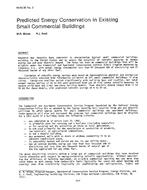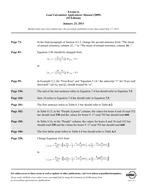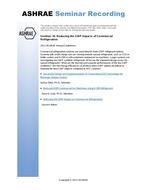Thermal resilience of buildings is commonly assessedusing two metrics: thermal autonomy (TA) is a measureof the fraction of time during a year that a building canpassively maintain comfort conditions without activesystem energy inputs; and passive habitability (PH) is ameasure of the duration of time that an indoor spaceremains habitable following a prolonged power outageover an extended period of extreme weather. Anemerging body of research has identified these twometrics as significant indicators of energy efficientbuilding performance. However, there remains a need toachieve consensus about how to coherently model thesemetrics during the early stages of design to better informdecision making.
This paper proposes a framework to establish a commonset of conventions, protocols and benchmarks for TA andPH metrics. First, it attempts to address the comfort andhabitability indoor temperature thresholds that presentlyvary considerably in the literature and then to define bothcomfort thresholds appropriate for the analysis ofpassive measures in naturally ventilated buildings, andhabitability thresholds under extreme conditions of hightemperatures and humidity. Second, a consistentmethodology for compiling weather data that reflect theimpacts of climate change on extreme weather events isadvanced. Third, modeling assumptions address themost vulnerable occupants in terms of their age and stateof health, but also reconcile, in the case of multi-unitresidential housing, the correlation between individualsuite behaviour and whole-building performance so thatthe ‘weakest links in the chain’ deliver acceptable levelsof thermal resilience. This paper also advocates for theinclusion of minimum levels of thermal resilience infuture codes and standards to futureproof buildings.
Citation: ASHRAE/IBPSA-USA Bldg Simulation Conf, Sept 2020
Product Details
- Published:
- 2020
- Number of Pages:
- 8
- Units of Measure:
- Dual
- File Size:
- 1 file , 2.3 MB
- Product Code(s):
- D-BSC20-C008


